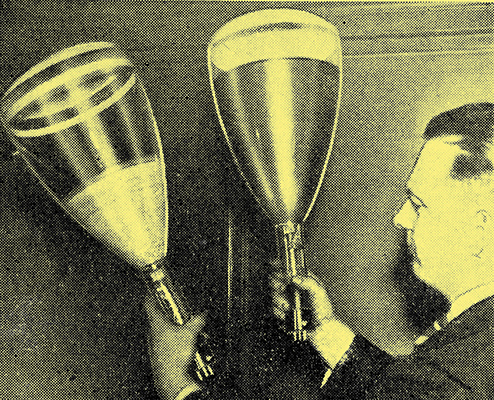|
The use of an intensifier electrode.

A 9 inch tube of the new 'intensifier' type (on left) compared with a standard tube of the same size.
The principal improvement to be found in the American CR tube shown in the accompanying photo consists of an intensifier electrode in the form of one or two metallic rings near the screen end of the tube; this serves to accelerate the electrons after deflection. It is claimed that the tube gives greatly increased brilliance without corresponding loss in deflection sensitivity. Earlier attempts at increasing deflection sensitivity for a given anode voltage have been along lines of increasing the deflection plate size and decreasing the space between, but there is a definite practical limit in this direction without seriously affecting the focus characteristics of the tube.
The new tube also has several refinements in its gun structure to obtain better focus and modulating characteristics. The electron gun is operated at the same potentials and in the same manner as in other tubes of corresponding screen diameter and the intensifier electrode may be connected to the final anode and the tube operated in the conventional manner. If, however, an additional voltage equal approximately to the accelerating electrode potential be applied between the intensifier and the second anode, the effect is to brighten the pattern to an extent equivalent to doubling the accelerating voltage, yet not causing so great a sensitivity decrease as would normally result. In terms of screen pattern size, this means that, instead of the 50%. reduction which doubled accelerating voltage would normally produce, the voltage with the use of the accelerating element reduces pattern size by only 18%.
The positive potential required between second anode and the intensifier electrode may be taken from existing cathode-ray tube power supply systems by addition of a single half-wave rectifier operating from the same transformer winding and connected in reverse polarity. Filter requirements may be satisfied by the use of a small capacitor and a high resistance bleeder of approximately 10 MΩ because of the low current to this electrode.
|